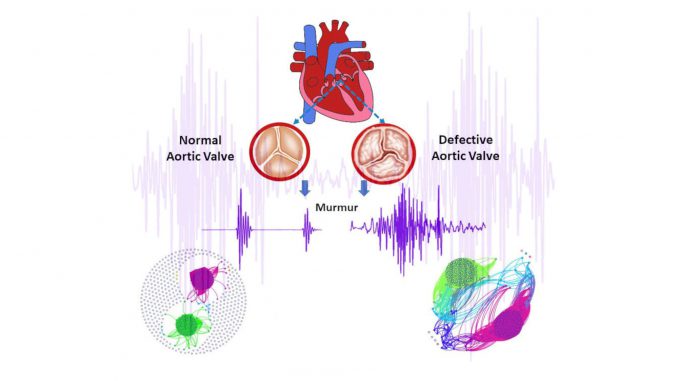
Listening to the sound of a beating heart can diagnose hard-to-detect diseases using new techniques that scientists are trying to turn into a mobile app.
Using only a stethoscope and a computer, researchers at the American Institute of Physics have created a system able to discover aortic valve stenosis, which can cause heart failure. Aortic valve stenosis occurs when the aortic valve narrows, constricting blood flow from the heart through the artery and to the entire body. In severe cases, it can lead to heart failure.
Scientists believe their newly created system could massively benefit rural communities, as a simple low-cost way to diagnose a disease that otherwise requires sophisticated technology.
The research was published on August 30 in the peer-reviewed scientific journal, the Journal of Applied Physics, titled Unwrapping aortic valve dysfunction through complex network analysis: A biophysics approach. The study was authored by Vijayan Vijesh, Mohanachandran Nair Sindhu Swapna, Krishan Nair Satheesh Kumar and Sankaranarayana Iyer Sankararaman.

As a result of the diagnostic challenges early cases are often missed, this research could be a fix. The team are currently developing their work into a mobile app that could be accessed across the globe, and might even be able to diagnose other conditions.
The “lub dub” sound of the heart holds the key: “lub” sounds occur when the heart fills with blood, “dub” follows when the pulmonary valves close. But when aortic stenosis is present the “lub” and the “dub” sounds happen at once.
While measuring heart sound data collected over just ten minutes, Dr. Swapna, of the University of Nova Gorica, Slovenia and the University of Kerala, India, created a graph of points. A healthy heart had two distinct clusters of points, while hearts struck by aortic stenosis had much closer and poorly defined points.
Dr. Swapna said: “In the case of aortic stenosis, there is no separation between the lub and dub sound signals. Many rural health centers don’t have the necessary technology for analyzing diseases like this. For our technique, we just need a stethoscope and a computer.”

She believes their sound imaging technique could work for diagnosing diseases in other organs too.
Dr. Swapna added: “The proposed method can be extended to any type of heart sound signals, lung sound signals, or cough sound signals.”
The researchers used machine learning, a type of Artificial Intelligence (AI), to examine the graph and identify those with the disease and they came back with 100 percent accuracy, far more than other testing methods.
Produced in association with SWNS.
Recommended from our partners
The post Scientists Develop New System That Allows Heart Diseases Detection Via Mobile App appeared first on Zenger News.

